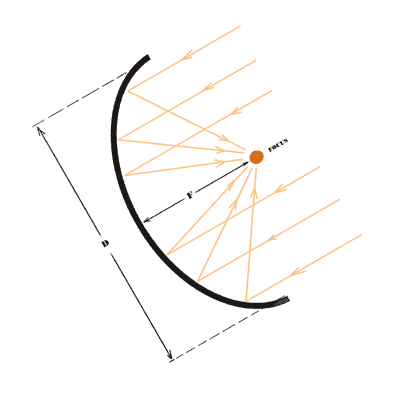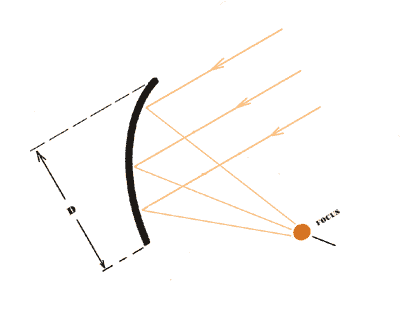
2) W0LMD Patch (K5MAN drawing, PDF file 25 KB)

The AO-40 has the DownLink into S-Band (2,4GHZ). For this frequency we need not the usual radio antennas, but parabolic dishes for enough efficiency.
Looking for the best Dish, we have several questions for a good reception of satellite. Hundreds of pages around Internet they have infos about it, but the most pages are copies from some other page and usually the description is fragmentary.
Aim of this page is to explain with the simplest way the basic parameters, in order to have the better choice
for the AO-40 "setup".
For the ÁÏ40, we use a small Helix antenna or a Patch.
The most important question is: what type of "Feeder" will must be used, depending upon the Dish, for the best result?
If you want the answer, just follow the next steps:
1. Measure the F/D ratio of your Dish. If you looking for the "focus-point", it's possible to determine that by using 2 small mirrors near the opposite edges of the dish, and aiming the dish at the sun, see where the 2 reflections converge.
2. If the F/D is less than 0,4 (typical TVRO Center-feed dishes), use a Patch Feeder.
If less than 0.35 don't use a scalar ring.
3. If the F/D is greater than 0.4 (typical offset dishes), use a Helix feed..
It's very important that: the Helix must be LHCP, since the Dish reflection reverses the AO-40 polarity.
For example: we supposed that, the F/D = 0,4 . On this case, Helix should have 4 turns. If the F/D =0, 55 the Helix should have 5,5 turns.
1) 7N1JVV's Patch (K3TZ drawing, PDF file 60KB)![]()

2) W0LMD Patch (K5MAN drawing, PDF file 25 KB)![]()

![]()
Offset Dishes
An Offset Dish antenna has
a reflector that is a section of a normal parabolic reflector, as shown on the right picture of Fig.1.
Because this section does not include the center of the dish, none of the radiated beam is blocked by the "Feeder", D/C and support brackets.
For small dishes, feed blockage in an axial-feed dish causes a significant loss in efficiency. Thus, we might expect an offset-dish to have higher efficiency than a conventional dish of the same aperture.
  |
In addition to higher efficiency, an Offset-dish has another advantage for satellite reception.
The dish (see Fig.1) aimed upward toward a satellite, has its feedhorn pointing toward the sky.
A conventional dish would have the feedhorn above it, pointing toward the Ground. Any spillover from the feed pattern of the conventional dish would receive noise from the "worm" earth, while spillover from the offset dish would receive less noise from the "cool" sky !
![]()
That's all folks !
Have fun with AO-40 !
Mak SV1BSX
![]()

| Literature: Parabolic Dish Antennas (by Paul Wade) Offset Dishes (by J. Sorensen) Satellite Antennas (Hirsman) W0LMD Web-page K3TZ Patch-drawing K5MAN Patch-drawing |
http://www.qsl.net/sv1bsx |
| AO-40 index | Home (reload) |